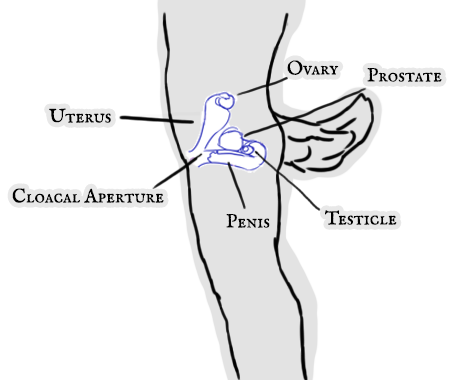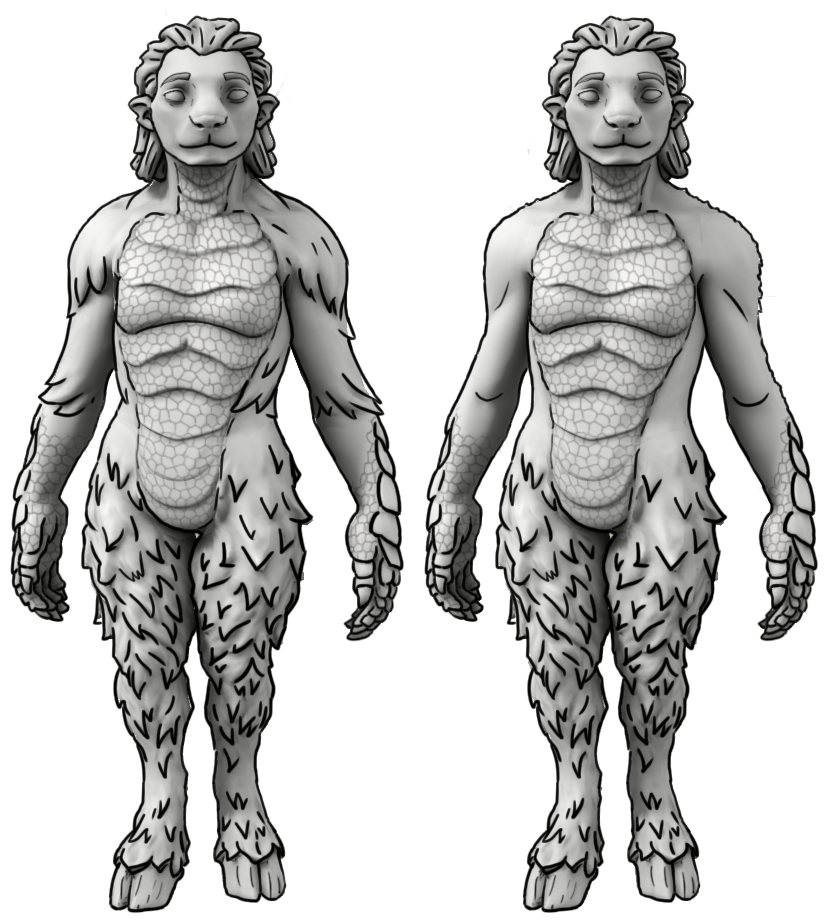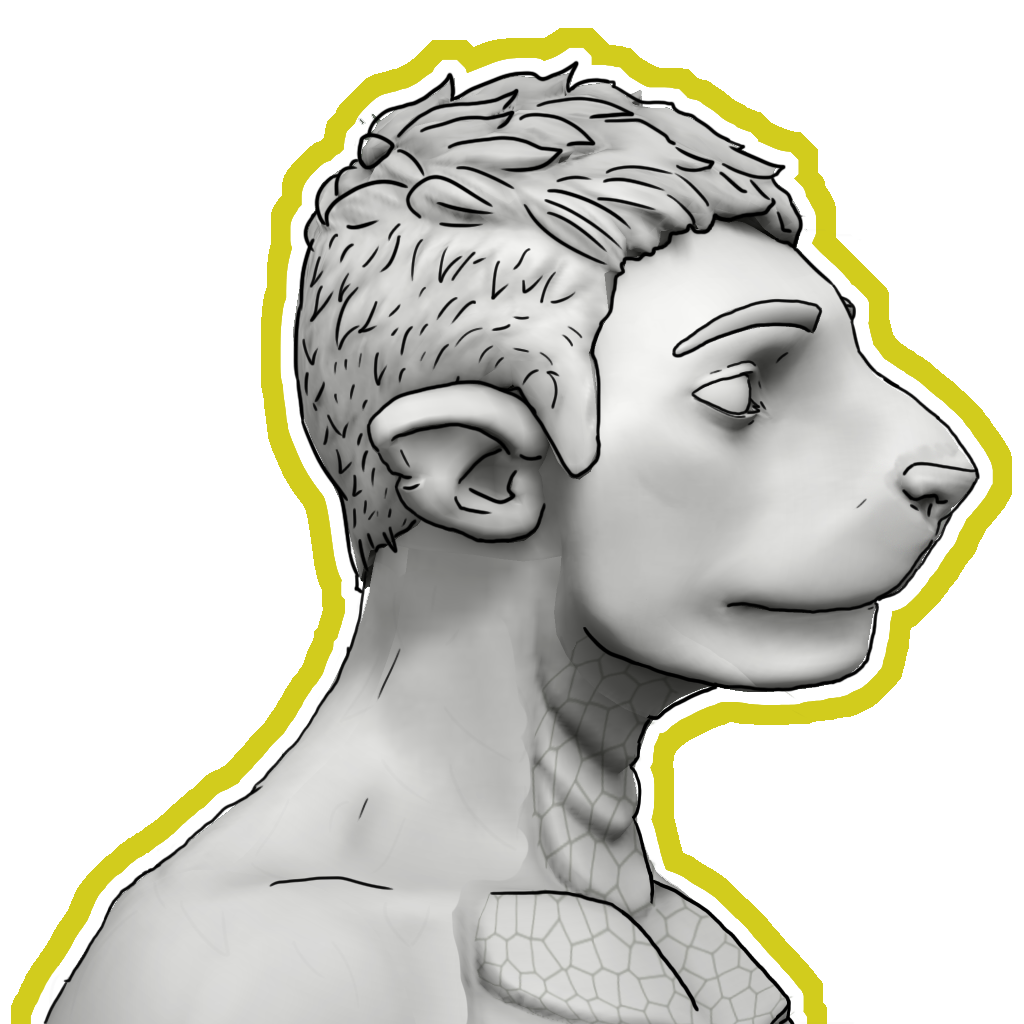Nabastis
Cloven hooves and a penchant for climbing have enabled them to inhabit almost every corner of Orlem.
Their body is covered in fur, except for a strip of skin with overlapping scales that goes from the top of their neck to their lower abdomen. They have a feline face with a larger muzzle, and low, pointy ears at the side of their head.
Since the sea stilled, some have built floating cities, with varied levels of success.
Basic Information
Anatomy
Hair and Fur
When they hatch, their entire body is covered in a dense layer of soft, woolly down fur, also known as egg fur, which they shed approximately a year later.Short-haired nabastis grow a winter coat, which they shed at the beginning of the warmer season. Those from snowy climates have longer fur year-round, similar to egg-fur but thicker. They have to brush often because their fur is denser, and the loose hair can get trapped and cause painful knots.
They can grow beards, which are often a lighter colour than their regular fur. In some cases, the beard hair grows high enough to make a moustache.
Scales
A hatchling sheds its scaly skin for the first time a few days after shedding the down fur. They are still soft, but it will harden as they shed it, which they do often because they grow fast in the first three years. After shedding their egg fur, they’ll fully shed their scales for the first time.The skin usually feels soft for some time, hence why many children wear clothes with some form of padding.
Tail
Nabastis have tails, the bony part can be between 6 to 10cm long. Their tail fur is similar to their facial hair, and usually has the same colour.Hooves
During gestation and incubation, their hooves are covered in a rubbery outer layer to protect both the carrier and the egg. Once hatched, as they learn to walk during those first few days, it will soften and peel off.Nabastis have to care for their hooves, especially if they don’t have the chance to wear them out naturally.
Did you know?
In many places around Orlem, nabastis sign agreements and identify themselves with a mark carved at the base of their hooves. They usually wear shoes to which they could add a base adjusted to the shape of the mark, to properly rest the hoof.Fire breathing Nabastis
For the past three thousand years, nabastis all around Orlem have randomly hatched possessing a gland which allows them to breathe fire. Although not usual, it is not rare. It is not inherited (no matter how much certain people might claim the contrary), and depending on the ethnicity, it could be a good or a bad thing. Any clutch could have from one to be entirely made of fire breathers.Fire-breathing children are prone to have reflux, hot coughs, and/or firepuking while they learn how to control the gland that provides the fuel for the fire. If left uncontrolled, it could lead to severe health issues.
After the explosion of the moon, many noticed it became much easier to learn, and the number of fire-breathers increased.
Like those who dabble in magic of any kind, fire-breathing nabastis can suffer from Boiling Blood disease if they aren't careful. Most firebreathers move to colder areas, as not many handle the heat well.
Did you know?
The people of the southern region say that when a carrier experiences heartburn during pregnancy, it might mean they're carrying a fire-breathing clutch.In the West, eating spicy food while pregnant is considered an offering to the spirits to ask for one.
What can Fire breathers do?
Having the ability is only half the way. Fire-breathers need training to have more than just an enviable tolerance to spicy food.Firebreathing is a form of passive magic. Unless they abuse their ability, the damage they suffer is instantly cured by the flame itself.
Expert fire-breathers tend to become potion brewers, glass artisans, artists, healers, jewellers, or blacksmiths.
Genetics and Reproduction
They reach sexual maturity at around 30/35 years old, with the “fake laying”, a one-time occurrence in which the womb secretes the same viscous gunk it produces to protect the eggs during gestation. They can lay eggs until they’re between 100/110 years old.
Pregnancy
They gestate the eggs for four months and incubate them for another three. Although in reality it always depends on the size and number of the hatchlings. Eggs per clutch are usually proportional to the size of the carrier and their nutrition before and during the pregnancy.Did you know?
During incubation, the eggs are kept covered. Some use specially picked vegetation, others keep their down fur for this very occasion, or shed fur which they keep damp by sprinkling it with plant water.If the shell tears, the egg can be salvaged if it can be closed without compromising the elasticity.
Remove these ads. Join the Worldbuilders Guild


















Really interesting article! I particularly liked the section on reproduction - the idea that some choose to go into isolation because of the extra shedding and risk of skin infections is really interesting. Love the bit about gender as well, and the nice table with pronouns! :D
Explore Etrea | WorldEmber 2025
Thank you so much for your words <3
The bit about shedding gave me some ideas about using that to create a difference between people with different incomes.